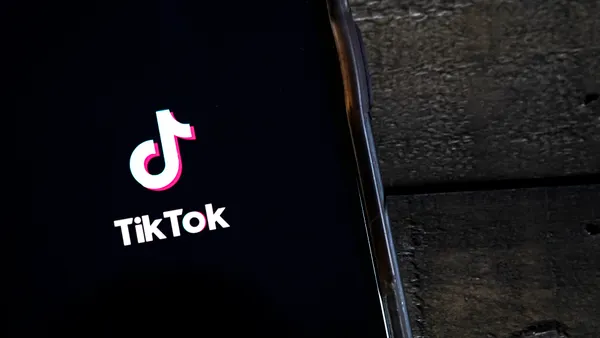TikTok is stepping up its game when it comes to protecting young people. Facing pressure from regulators and safety advocates around the world, it’s bolstering its age detection and safety protocols with newer technology, more human oversight, and stricter enforcement. The goal: reduce exposure of children under 13 to the platform, make sure teenage users get experiences appropriate for their age, and make it harder to cheat the system.
Below is a breakdown of what’s happening, why it matters, and what creators, advertisers, and brands need to do to stay aligned with TikTok’s evolving rules.

What TikTok Is Doing: New Age Detection Layers
1. Birthdate Gate & Account Creation Rules
When someone signs up, they must enter their birthdate. If they appear to be younger than the minimum (13 in most regions), TikTok prevents immediate re-registration using a different date of birth. Accounts with invalid or under-minimum age information are suspended.
This is the baseline: human-declared age. But TikTok knows that’s not enough.
2. AI-Based Age Estimation Pilot Programs
TikTok has been testing AI tools that analyze signals beyond what a user inputs. In the UK, for example, TikTok says its AI systems have helped flag and remove thousands of additional accounts that were likely underage despite having been created with older birthdates. They are expanding this to other regions, such as the European Union.
These tools use clues like profile images, content posted, and signals referencing birthdays. If what the AI estimates doesn’t match the age declared, a human moderation team steps in.
3. Human Moderation & Escalation System
Even with AI, human reviewers play a central role. Moderators are being trained to recognize warning signs of underage accounts. If during regular content review they suspect someone is under 13, they escalate the case to a specialized age assurance team. When in doubt, TikTok errs on the side of removal. Reports from outside users (anyone, even without an account) can also trigger reviews.
4. Safety Features for Teen Accounts
Beyond detection, TikTok applies defaults and restrictions for teen accounts until they pass checks. Some examples:
- Under-16 users often have direct messaging disabled.
- Screen time limits are applied.
- Certain content is filtered from their feed.
- Notifications may be reduced during late hours.
5. Global Cooperation & Regulatory Talks
TikTok is engaging with regulators, privacy bodies, NGOs, and industry forums to standardize what age assurance means. As countries consider stricter minimum ages, TikTok is preparing tools and policies to meet those standards. The company has acknowledged that legal frameworks differ, and it intends to scale its detection tools in a way that balances safety and privacy.
Why These Changes Are Necessary
- Regulatory Pressure: Many countries are considering or have passed laws that require social platforms to enforce age limits, not just rely on self-declared ages.
- Safety Concerns: Young users are especially vulnerable to harmful content, misinformation, or predatory behavior. Better detection helps reduce risk.
- Brand Trust: Creators, advertisers, and users increasingly expect platforms to be safer. Missteps in underage exposure can damage reputation.
- Platform Integrity: If large numbers of minors bypass rules, it weakens the platform’s safety promises and makes enforcement harder.
Risks, Challenges & What TikTok Needs to Solve
- Accuracy vs Privacy: Estimating age from content or appearance risks false positives. Some people may be older but look younger, or vice versa. Privacy concerns arise when using imagery or AI for age estimation.
- Cultural & Legal Variations: Minimum age, what content is “appropriate,” and privacy laws differ by country. A tool that works in one region may not comply in another.
- AI Limitations: AI can be fooled, can misinterpret visual signals, and can’t always infer context. It needs human supervision.
- User Circumvention: Underage users may still lie about age, create fake profiles, use others’ devices—tools alone can’t fully prevent misuse.
- Transparency & Accountability: Users (including parents) want clarity about what signals are used, how age is estimated, and how mistakes are handled.
What Creators, Advertisers & Brands Should Do
To stay ahead and ensure compliance while still growing and engaging your audience, here are actionable steps:
- Create Age-Sensitive Content
If your content might attract under-13s or teens, lean toward safe themes, avoid mature content, and assume filters or restrictions may apply. - Understand Default Limitations
Know that teen accounts have certain features turned off or limited by default. If your campaign depends on features like DMs, Duets, or certain content types, check how they work under restrictions. - Use Multiple Accounts to Test
To experiment with different content styles or targeting strategies, using Bulk TikTok Accounts helps. That way, you can test safely without risking your main profile’s reach or compliance. - Be Transparent with Your Audience
Include disclaimers or age-appropriate messaging. If your content could be misinterpreted or misaligned with age detection systems, clarity builds trust and reduces risk of misclassification. - Track Analytics & Feedback Regularly
Keep an eye on reach, engagement, and especially drop-offs. If certain videos decline sharply, it could be due to age restrictions or detection tools affecting visibility. - Stay Informed on Regulations
Laws and policies are evolving in many countries. Be aware of how minimum age laws are changing in your markets, and prepare to adapt accordingly.
How This Affects the Bigger Picture: Safety, Trust, & Platform Behavior
TikTok’s evolving age detection processes are more than just internal policy tweaks—they mark a shift in how social platforms balance openness with protection.
- Platforms are moving toward safety-by-design: built-in protections rather than optional settings users must find.
- Industry stakeholders are increasingly asking for standardization and regulation: what counts as sufficient age verification? What are the rights of minors and parents?
- Creators and advertisers are being forced to think long-term: not just in terms of reach or virality, but ethical positioning and sustainable growth in a stricter environment.
